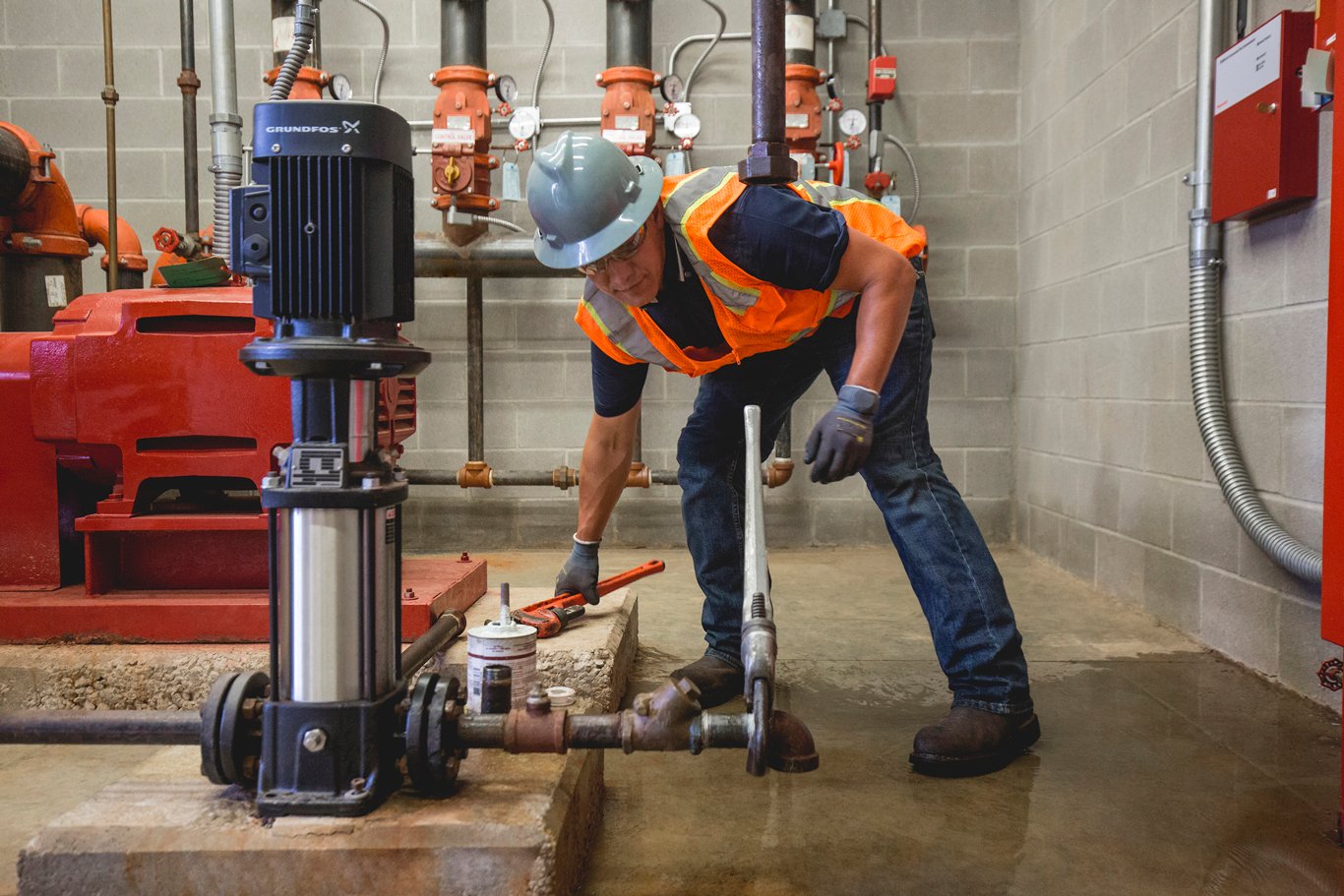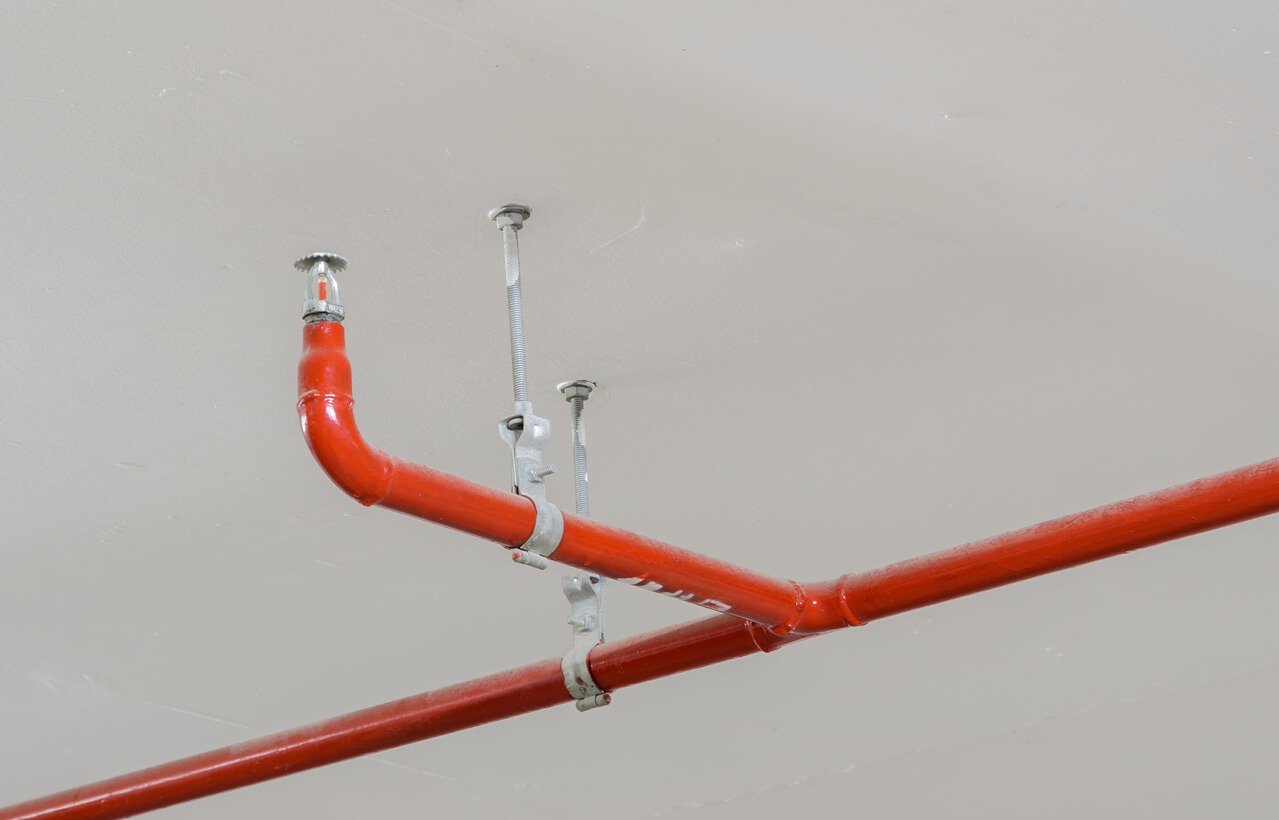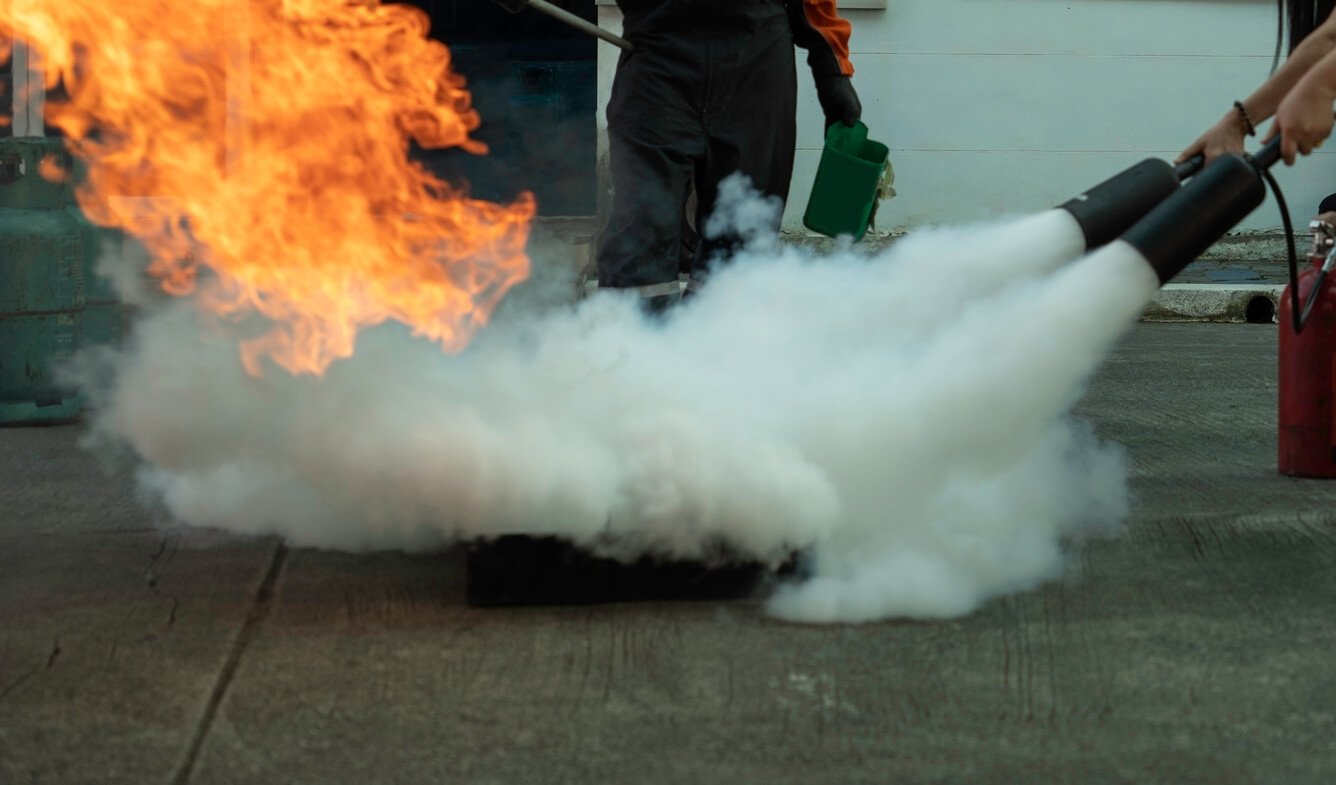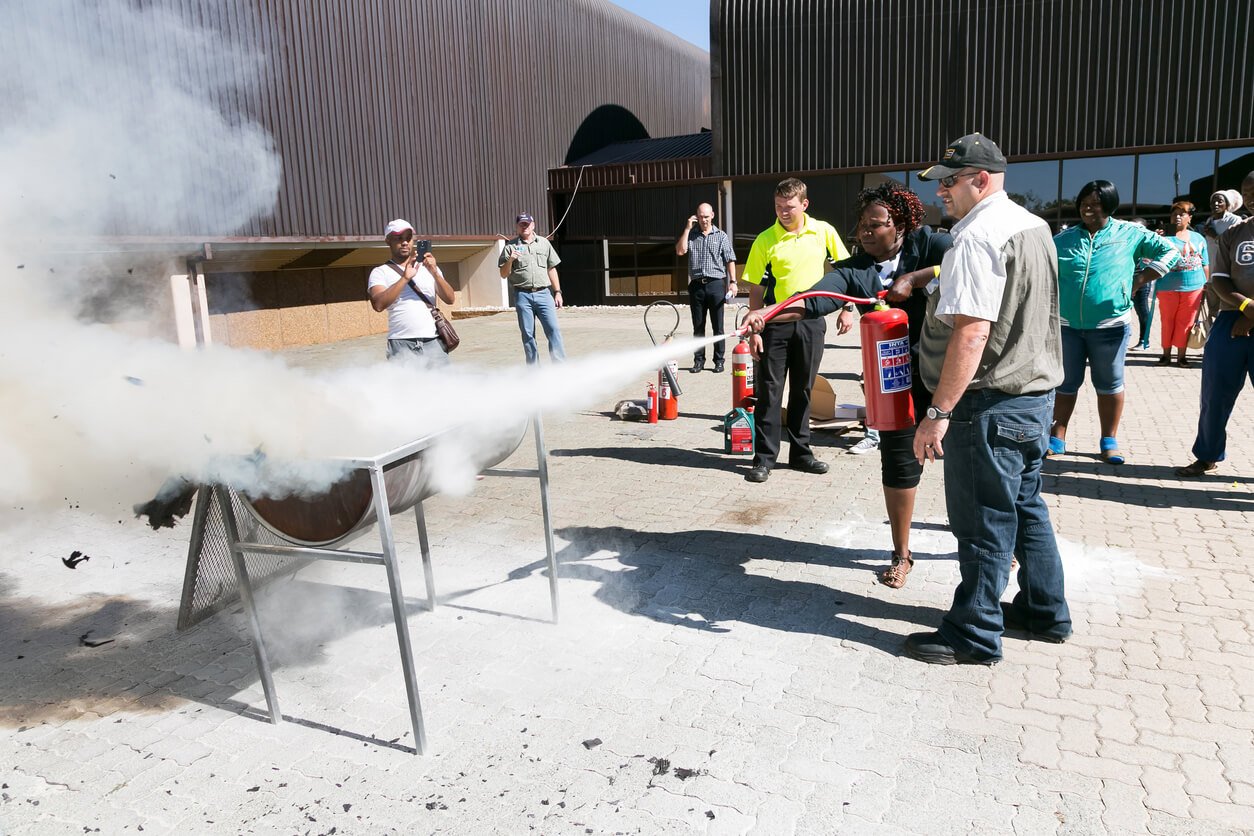What is a Fire Pump?
A fire pump is a specialized mechanical device that increases water pressure in fire protection systems when municipal water supply cannot provide sufficient pressure for effective fire suppression. These critical components automatically boost water pressure to ensure fire sprinklers, standpipe systems, and other fire protection equipment receive adequate water flow during emergencies. Fire pumps are essential in tall buildings, large facilities, and any structure where standard water pressure is insufficient.
Fire pumps are essential components of modern fire protection systems.
These sophisticated systems work seamlessly with fire sprinkler systems to deliver life-saving water pressure when it's needed most.
Whether installed in high-rise buildings, storage warehouses, or specialized applications like fire trucks and fire boats, fire pumps ensure adequate water supplies for firefighting operations.
The various types of fire pumps available today are designed to meet specific building requirements and water supply challenges, making them indispensable elements in water-based fire protection systems.
Today, we’ll dive into the ins and outs of these mechanisms so you know what they are, how they work, and how to keep them in tip-top shape.
Key Takeaways
- Fire pumps are essential when standard water pressure isn't enough – If your building is over 400-500 feet tall or has high water demand requirements, municipal water pressure alone won't provide adequate fire protection coverage.
- Choose the right pump type for your specific needs – Horizontal split case pumps work best for high-flow applications with easy maintenance access, while vertical turbine pumps are ideal when water sources are below ground level.
- Professional installation and regular testing are non-negotiable – Fire pumps must be installed by certified professionals and tested regularly to ensure they'll activate properly during emergencies when lives depend on them.
- Compliance with NFPA 20 standards protects your investment – Following established fire pump standards not only ensures safety but may also qualify your facility for insurance premium discounts and regulatory approval.
What Is a Fire Pump?
A fire pump is a specialized mechanical device designed to increase water pressure in fire protection systems when the existing water supply cannot provide sufficient pressure for effective fire suppression.
These pumps serve a similar purpose across different applications: boosting water pressure to ensure proper operation of fire sprinklers, fire hose valves connected to standpipe systems, and other fixed-place fire suppression equipment.
Boosting water supplies becomes critical in tall buildings where municipal water pressure naturally decreases with elevation, or in facilities where the supply cannot provide sufficient flow rates during emergency situations. Fire pumps work as an integrated component of fire suppression systems, automatically activating when the system pressure drops significantly enough to compromise fire protection effectiveness.
Modern fire pump systems consist of three main components:
- The pump itself
- A driver (electric motor or diesel engine)
- A sophisticated control system
The fire pump's control system monitors system pressures continuously through pressure sensors—these detect when intervention is needed. When sensors automatically detect pressure drops, the system activates to maintain adequate pressure throughout the fire protection piping system.
How Fire Pumps Work in Fire Protection Systems
Fire pumps operate through sophisticated monitoring systems that continuously track water pressure throughout the fire protection network. When the fire sprinkler system drops below predetermined pressure thresholds, the fire pump's control system automatically responds to maintain adequate water flow.
The monitoring system watches for two types of pressure changes:
- Gradual, slow pressure declines that typically indicate minor system leaks
- Sudden dramatic drops that occur when sprinklers activate during a fire emergency.
Pressure sensors are strategically placed throughout the system to ensure comprehensive monitoring.
When system pressures drop significantly during a fire event, these sensors trigger automatic pump activation. This immediate response compensates for pressure loss, ensuring fire sprinklers and firefighting hose operations receive adequate water pressure. The fire pump's control system governs the entire operation, switching seamlessly between routine pressure maintenance and emergency response modes.
A key component in this system is the circulation relief valve, which prevents damage from excess pressure while maintaining continuous water circulation. This circulation prevents water stagnation and ensures the system remains ready for immediate activation.
During normal operations, a smaller pressure maintenance pump (commonly called a jockey pump) handles minor pressure fluctuations and compensates for small leaks. This secondary pump maintains system pressure within optimal parameters, reducing wear on the main fire pump while ensuring water remains immediately available when the fire suppression system activates.
Types of Fire Pumps and Their Applications
Fire protection systems utilize several distinct types of fire pumps, each designed for specific applications and installation requirements.
- Horizontal Split Case Fire Pump: These systems offer excellent maintenance accessibility and handle high-pressure demands effectively, making them ideal for large fire sprinkler systems and firefighting hose operations (think manufacturing and industrial industries).
- Vertical Split Case Fire Pump: This delivers similar performance to its horizontal counterpart but in a smaller footprint.
- Vertical Turbine Fire Pump: This pump specializes in drawing water from below-ground sources like wells or underground storage tanks. Vertical turbine-type fire pumps can operate with negative suction pressure, accessing static supply sources that other pump types cannot reach.
- Vertical In-Line Fire Pump: This system offers another space-saving solution for smaller applications, providing smooth water flow through inline suction and discharge connections. However, maintenance considerations should factor into system design decisions.
Beyond these primary categories, centrifugal pumps dominate fire protection applications due to their reliability and flow characteristics.
End suction pumps provide cost-effective solutions for smaller systems, while positive displacement pumps serve specialized applications requiring consistent flow regardless of pressure variations.
All fire pump types incorporate essential safety features like fire pumps circulation relief valves to protect system components and maintain proper water flow.
Top Fire Pump Power Sources and Drive Systems
Fire pumps typically utilize either electric motor or diesel engine power sources, with many installations incorporating both for redundancy.
Electric motor-driven systems connect to the local electric power grid and offer reliable, low-maintenance operation for most applications.
However, diesel engine backup ensures continued operation during power outages when fire protection is most critical.
The selection between electric and diesel power depends on:
- Local codes
- Reliability requirements
- Facility-specific needs
Many fire pump service installation configurations include automatic transfer capabilities, like switching to diesel power when the electrical supply fails. This dual-power approach provides maximum reliability in emergency situations.
The Necessary Water Supply Systems and Sources
To work properly, fire pumps need two things:
- Reliable water source
- Adequate water pressure
Let’s look at each a bit more in-depth.
Many facilities rely on dedicated storage solutions to ensure reliable water availability. The water supply for fixed fire protection systems often incorporates storage tanks, reservoirs, or connections to natural water sources like lakes and rivers. This provides independence from municipal water limitations, using static supply configurations such as tank, reservoir, or lake setups that guarantee water availability even during peak demand periods.
The pressure requirements become even more demanding when considering supplies for firefighting hose operations, which need higher pressures and flow rates than standard building systems.
Technical considerations play a crucial role in system design. Maintaining minimum expected suction pressure—typically 0 psi at the suction flange (with some jurisdictions requiring 20 psi)—prevents pump cavitation and ensures reliable operation under all conditions.
Some installations must also accommodate challenging scenarios with negative suction pressure, where pumps operate in suction lift conditions—drawing water from sources located below the pump level.
Other Creative Applications for Fire Pumps
While most people think of fire pumps as stationary building equipment, these versatile systems actually serve critical roles far beyond traditional building protection. The technology has evolved to meet diverse emergency response needs across multiple environments.
Emergency responders rely heavily on systems integrated into fire trucks, which transform these vehicles into mobile firefighting command centers. These fire trucks serve dual purposes—not only do they transport firefighters and equipment to emergency scenes, but their onboard pumping systems can boost water pressure from virtually any available source. Whether drawing from fire hydrants, ponds, swimming pools, or portable water tanks, these mobile units provide the flexibility that emergency situations often demand.
Waterfront communities face unique challenges that require specialized solutions. Fire boats and marine firefighting vessels serve harbor and marine facility protection, equipped with pumps specifically designed to operate in harsh saltwater environments. These marine applications demand robust, corrosion-resistant pump designs that can withstand constant exposure to salt spray while maintaining reliable performance during emergencies.
Industrial settings present their own complexities, particularly in facilities like storage warehouses where unique hazards and storage configurations require customized approaches. These installations must handle high-challenge fire suppression scenarios—think massive warehouse spaces filled with combustible materials or chemical storage areas with specific suppression requirements—all while maintaining reliability.
Fire Pump Standards and Compliance
Fire pump installations must meet rigorous standards to ensure reliable performance when lives are at stake. The primary regulatory framework in North America centers on NFPA 20, the National Fire Protection Association's standard for stationary fire pump installations, along with local fire codes and building requirements.
Insurance considerations also play an important role in system design. Organizations like the TAC (tariff advisory committee) in certain regions provide guidelines for fire protection systems that can influence insurance premiums and coverage. These tariff advisory committee guidelines help property owners understand what fire protection features may qualify for insurance discounts, although pump manufacturers generally adhere to specifications that exceed basic insurance requirements.
The regulatory framework ensures that systems demonstrate reliable performance under all conditions. Fire pumps must prove they can recover pressures lost during peak demand scenarios and maintain adequate water supply when multiple sprinklers activate simultaneously.
Standards governing fire pump fixed installations address critical factors, including proper location, accessibility for maintenance, and comprehensive performance testing protocols.
Ongoing compliance verification ensures continued reliability throughout the system's service life. Regular testing confirms that fire protection system components maintain their specified performance levels, providing assurance that these critical life safety systems will function properly during emergencies.
Select The Right Fire Pump for Your Building
Fire pumps represent critical infrastructure in fire protection systems, providing essential pressure boosting when municipal supplies prove inadequate.
Understanding the various types of fire pumps and their applications helps ensure proper system design and reliable fire protection system performance.
Working with a professional ensures optimal pump selection and installation for each specific application. Reach out to the fire safety experts at Impact Fire for a custom assessment.







